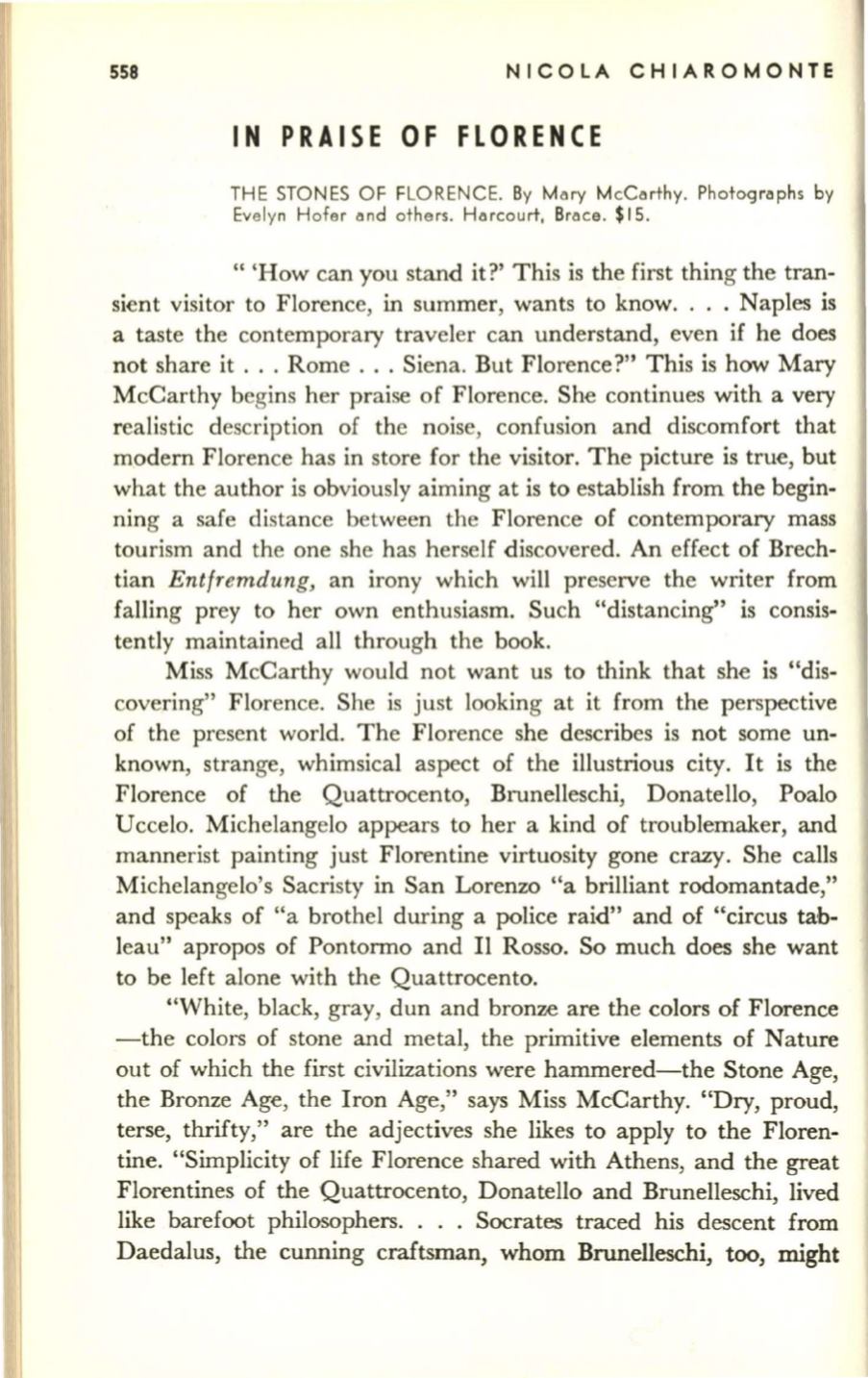
558
NICOLA CHIAROMONTE
IN PRAISE OF FLORENCE
THE STONES OF FLORENCE. By Mory McCorthy. Photogrophs by
Evelyn Hofer ond others. Horcourt, Broce. $15.
" 'How can you stand it?' This is the first thing the tran–
sient visitor to Florence,
in
summer, wants to know.... Naples is
a taste the contemporary traveler can understand, even if he does
not share it ... Rome . . . Siena. But Florence?" This is how Mary
McCarthy begins her praise of Florence. She continues with a very
realistic description of the noise, confusion and discomfort that
modern Florence has in store for the visitor. The picture is true, but
what the author is obviously aiming at is to establish from the begin–
ning a safe distance between the Florence of contemporary mass
tourism and the one she has herself discovered. An effect of Brech–
tian
Entfremdung,
an irony which will preserve the writer from
falling prey to her own enthusiasm. Such "distancing" is consis–
tently maintained all through the book.
Miss McCarthy would not want us to think that she is "dis–
covering" Florence. She is just looking at it from the perspective
of the present world. The Florence she describes is not some un–
known, strange, whimsical aspect of the illustrious city.
It
is the
Florence of the Quattrocento, Brunelleschi, Donatello, Poalo
Uccelo. Michelangelo appears to her a kind of troublemaker, and
mannerist painting just Florentine virtuosity gone crazy. She calls
Michelangelo's Sacristy in San Lorenzo "a brilliant rodomantade,"
and speaks of "a brothel during a police raid" and of "circus tab–
leau" apropos of Pontormo and II Rosso. So much does she want
to be left alone with the Quattrocento.
"White, black, gray, dun and bronze are the colors of Florence
-the colors of stone and metal, the primitive elements of Nature
out of which the first civilizations were hammered-the Stone Age,
the Bronze Age, the Iron Age," says Miss McCarthy. "Dry, proud,
terse, thrifty," are the adjectives she likes to apply to the Floren–
tine. "Simplicity of life Florence shared with Athens, and the great
Florentines of the Quattrocento, Donatello and Brunelleschi, lived
like barefoot philosophers. . . . Socrates traced his descent from
Daedalus, the cunning craftsman, whom Brunelleschi, too, might


